Spectacular coral reefs in the world
Arrecife, in nautical terminology, is a rock, sandbar, or any other element that lies 6 fathoms (about 11 meters) or less below the surface of the water during low tide. Many reefs are the result of abiotic processes - sand deposition, wave erosion planning rock outcrops, and other natural processes - but the most well-known reefs are probably coral reefs formed in biotic processes dominated by corals and calcareous algae.
Coral reef or coral reef is an underwater structure made of calcium carbonate secreted by corals. It is a type of biotic reef formed by colonies of stony corals, which generally live in marine waters that contain few nutrients. Stone corals are marine animals that consist of polyps, grouped in various forms according to the species, and which resemble sea anemones, with which they are related. Unlike sea anemones, coral polyps of the order Scleractinia secrete carbonate exoskeletons that support and protect their bodies. Coral reefs grow best in warm, shallow, clear, sunny and agitated waters.
Often coral reefs are called "jungles of the sea", as they form one of the most diverse ecosystems on Earth. Although they occupy less than 0.1% of the total ocean surface, equivalent to half of the French surface, they are the habitat of 25% of all marine species, including fish, molluscs, worms, crustaceans, echinoderms, sponges , Tunicates and other cnidarians. Paradoxically, coral reefs thrive despite being surrounded by oceanic waters that provide few nutrients. They are most commonly found in shallow tropical waters, but there are also, to a lesser extent, deep-water corals and cold-water corals in other areas.
Coral reefs provide ecosystem services for tourism, fisheries and coastal protection. The total annual economic value of coral reefs has been estimated at US $ 375 billion. However, coral reefs are fragile ecosystems, in part because they are very sensitive to changes in water temperature. They are endangered by climate change, ocean acidification, explosive fishing, aquarium cyanide fishing, overuse of reef resources, and harmful land uses, including agricultural and urban runoff, and pollution of the oceans. Water.
There are hundreds of places like these in the world, I have made a small selection of some of the best known, however, the list is open to all suggestions that have.
-Great Barrier Reef (Australia)
The Great Barrier Reef is the largest coral reef in the world. The reef is located in the Coral Sea, off the coast of Queensland in northeastern Australia. The reef, which extends over about 2600 kilometers in length, can be distinguished from space.
A large reef area is protected by the Great Barrier Reef Marine Park. The Great Barrier Reef was declared a World Heritage Site by Unesco in 1981.
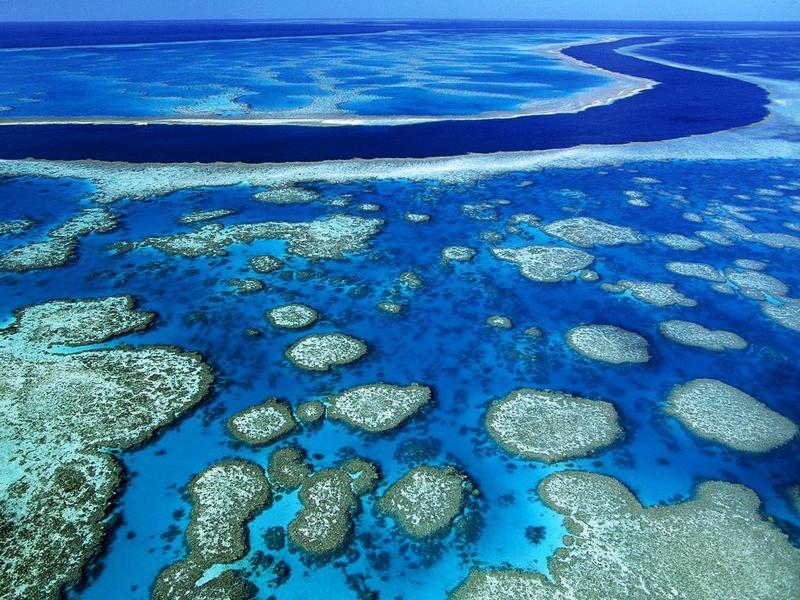
-Reefs of Cozumel (Mexico)
The Reefs of Cozumel National Park is considered part of the reef barrier known as the "Great Western Reef Belt" (also known as "Great Mayan Reef" and belongs to the "Mesoamerican Reef System"). The island of Cozumel is mostly surrounded by coral reefs, however the park area is located in the southern half of the island, south of the international wharves, and surrounding the west, south and a portion of the coast Of the east coast. It constitutes a natural resource of great importance for the regional economy, since in it they realize recreational activities, of conservation, exploitation, education, diffusion and monitoring.
The reefs are formed by a coral community that, like all of its kind, are the most diverse and complex in the seas. Thousands of tropical water bodies are home to hundreds of species from all the kingdoms.
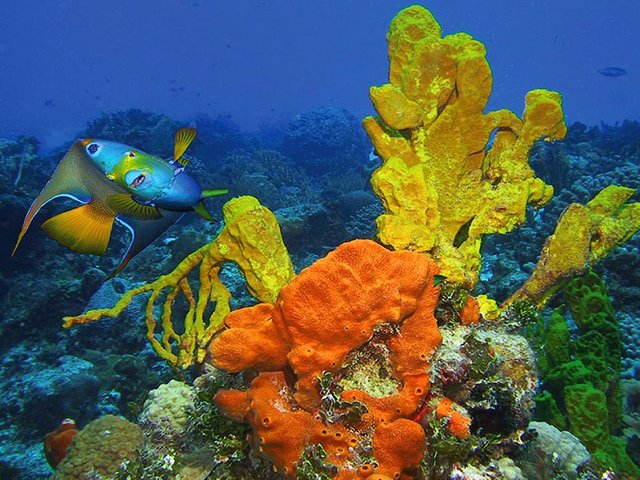
-Belize Reef Barrier
The Belize Reef Barrier Reserve System is a series of coral reefs located at a variable distance from the coast of Belize, about 300 meters from the coast in the north and about 40 kilometers in the south. It has a length of approximately 300 kilometers, and is part of the Mesoamerican Reef System, the second largest coral reef system in the world after the Great Barrier Reef. It is the most important tourist destination in Belize, attracting half of its 260,000 visitors.
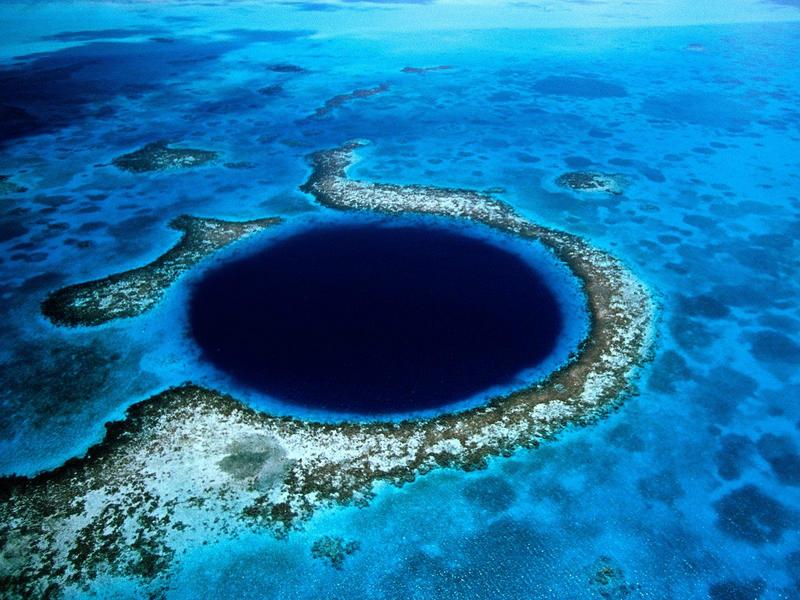
-Maldives Reefs
The Maldivian waters are home to diverse ecosystems, but are noted for their variety of colorful coral reefs, home to 1100 species of fish, 5 species of sea turtles, 21 species of whales and dolphins, 187 species of coral, 400 species of Molluscs and 83 species of echinoderms. Many species of crustaceans can be found there: 120 copepods, 15 amphipods, as well as more than 145 species of crabs and 48 species of prawns.
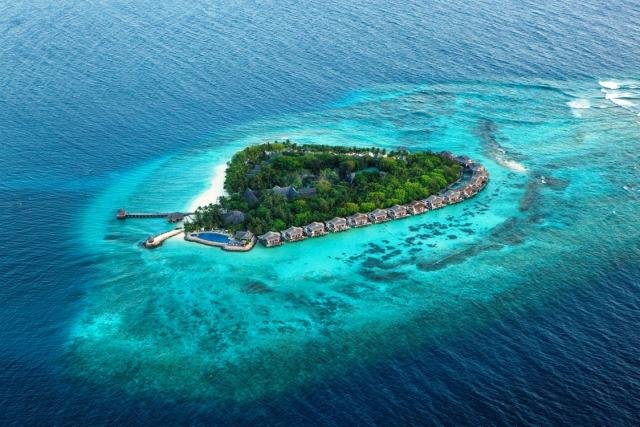
-Islas de la Bahía (Honduras)
Roatan, the largest of the Bay Islands, is characterized by its mountainous spine, composed of hills running from west to east across the island. These summits are often crowned by outcrops of metamorphic rocks such as marble, amphibolite, serpentine. The flat areas are scarce throughout the central mountain range of the island, these are mainly in the coasts, although, limited in size. The southern coast of the island has an abundance of wide and deep harbors and inlets, protected by reefs. While the northern part, except for a few narrow passages, is largely inaccessible, due to the extensive coral reef.
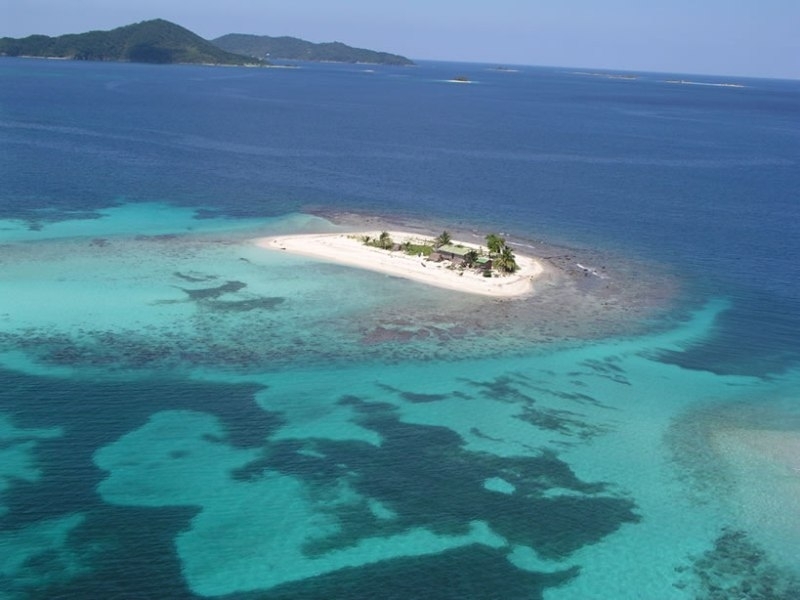
-Tubbataha Reef (Philippines)
The Tubbataha Reef Marine Park on the island of Palawan in the Philippines covers 33,200 hectares. The Tubbataha Reef is extremely ecologically important to the Philippines as a feeding place and cradle of marine life.
The Tubbataha Reef Marine Park was declared a World Heritage Site by Unesco in 1993 and was extended in June 2009.
In this reef are cataloged 396 species of corals. There are 479 species of fish from 46 families, such as the barracuda and the blanket. Tubbataha also houses six species of sharks.

-Apo Reef (Philippines)
The Apo Reef is a coral reef system of the Philippines located in the waters of the province of Mindoro Occidental in the Strait of Mindoro. Spanning 34 km2, it is the second largest reef system in the world and the longest in the country. The reef and its surrounding waters are protected areas in the country and is known administratively as the Apo Reef Natural Park (ARNP). It is one of the most popular and popular dive sites in the country.

-Lord Howe Island (Australia)
Lord Howe Island is a small island in the Pacific Ocean 600 km east of the Australian mainland. The group of islands that make up Lord Howe was declared Patrimony of the Humanity in 1982, by Unesco, in attention to its unique beauty and its biodiversity. Lord Howe Island Marine Park and Lord Howe Island Marine Park protect the maritime space surrounding the group of islands.
In the waters surrounding Lord Howe you can find more than 400 species of fish, including 9 endemisms. There are more than 80 species of coral that occur on the reefs around the group of islands. A recent study on the biodiversity and threats of coral reefs and other species of Lord Howe Island Marine Park reefs indicates that reefs are in good health with a minimum coral bleaching rate of 0.8% of the total Of specimens of hard coral species. In this protected area, 164 species of fish, 40 species of mobile invertebrates, 53 species of corals and other sessile invertebrates, 32 species of algae and 2 species of sea grass have been recorded. The nutrient richness of these waters is mainly due to the mixing of tropical currents with warm waters, which also allows the coexistence of species of both temperature ranges.
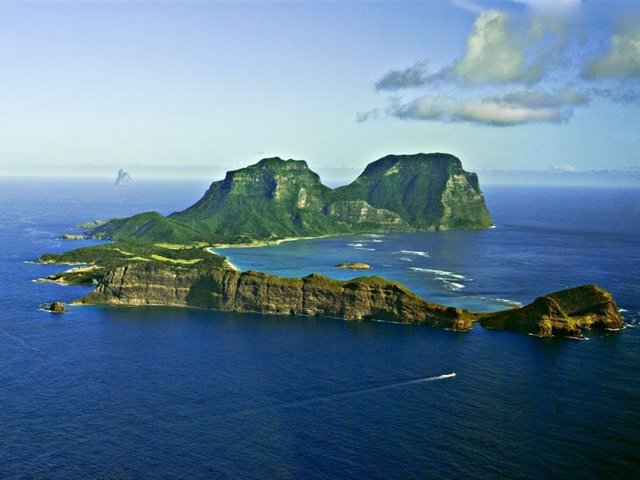
-Red Sea coral reefs
The Red Sea integrates one of the most salty seas on the planet due to the high rate of evaporation and the lack of rivers or streams of important flow that flow into it, presenting an average salinity of 40%, while the average seawater In the world is approximately 35%. Despite this, the main reasons for the optimum development of reef systems along its coasts are due to the efficient circulation of water with the Arabian Sea and the Indian Ocean through the Gulf of Aden. This exchange reduces the effect of high salinity caused by evaporation of water in the north, while warm southern water keeps the Red Sea waters warm throughout the year.
Its connection to the south with the ocean is narrow and shallow, favoring the isolation and giving rise to diverse endemic species directly related to others of the Indian Ocean. Down waters of the Red Sea we can contemplate near four hundred species of corals, being almost 8 % Of them endemic to this area. Most of these reefs grow directly from the coastline and are estimated to inhabit these waters for about five thousand years, forming immense marine colonies that accommodate a world full of life and exoticism. A place where the clear waters allow a visibility of up to forty meters, treasuring more than a thousand species of invertebrates and more than a thousand species of fish that present incredible shapes and colors, adding thirty different species of sharks, as well as turtles, dolphins or Dugongos, the smallest sirenios of the world and the unique representatives of its sort.
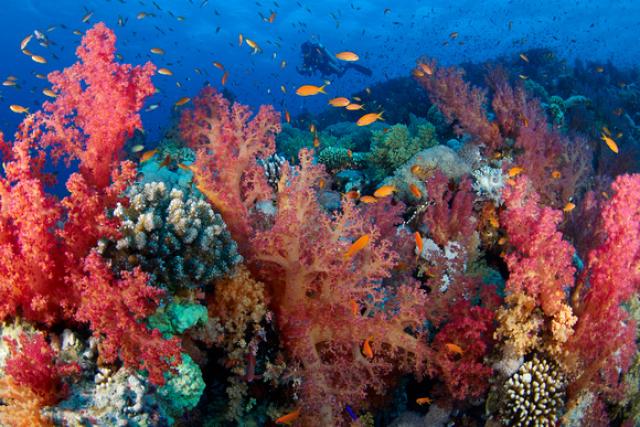
-Reef of Raja Ampat (Indonesia)
The archipelago of the Raja Ampat Islands is an Indonesian archipelago located northwest of the Doberai peninsula (or Bird's Head), northwest of the island of New Guinea.
Raja Ampat is located in the so-called Coral Triangle, a center of marine biodiversity. In the 23rd Expedition carried out by the organization Conservar la Naturaleza in 2002, 505 species of coral and 828 species of fish were counted. Australian ichthyologist Gerald R. Allen counted 283 species of fish in a single underwater exploration. A total of 1,320 species of fish have been identified.
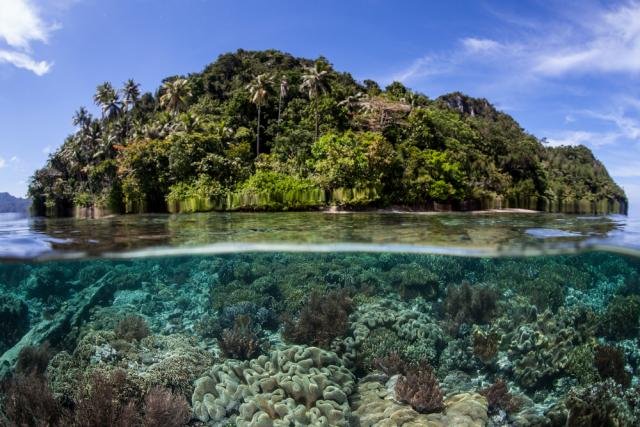
-Lagoons of New Caledonia (France)
New Caledonia Reef is located in New Caledonia in the South Pacific and is the second longest coral reef in the world, after the Great Barrier Reef.
The New Caledonia barrier surrounds Grand Terre, the largest island of New Caledonia, as well as the Ile des Pins and several smaller islands, reaching a length of 1500 km. The reef encloses a lagoon of 24,000km², which has an average depth of 25 meters. The reef is 30 kilometers from the coast, but extends almost 200 km to the reefs of Entrecasteaux in the northwest. This northwest extension encloses the Belep Islands and other sandy cays. Several natural passages open to the ocean. The Boulari passage, which leads to Noumea, the capital and main port of New Caledonia, is marked by the Amedee lighthouse.
The reef has a large diversity of species with a high level of endemism, and is home to endangered dugongs (Dugong dugon), and is an important nesting site for the green turtle (Chelonia mydas). It houses some 11,000 animal species and 419 species of coral, and was included in the list of World Heritage in 2008.
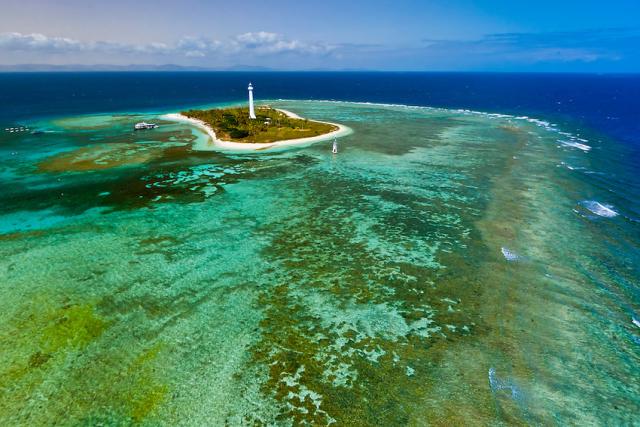
-Wakatobi National Marine Park (Indonesia)
The Wakatobi Marine National Park is a National Park comprising the Wakatobi Islands to the southwest of Celebes, Indonesia.
It has an extension of 1.39 million hectares (13,900 km²).
It was created in 1996 given the speed with which island ecosystems were degrading and to achieve a balance between the needs of local communities and the protection of biodiversity. It represents Indonesia's second largest marine national park. It encompasses coral reefs located in the middle of the Pacific going area, where there is the largest variety of coral species.
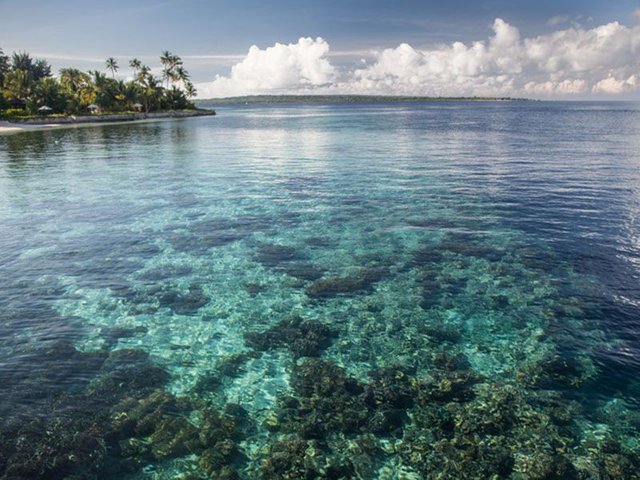
-Great Bank of Chagos (Indian Ocean)
The Great Bank of Chagos is located in the Chagos Archipelago in the British Indian Ocean Territory, about 500 km (310 miles) south of the Maldives, being the largest atoll structure in the world, with a total area of 12,642 Km² (4,881 square miles). The atoll is administered by the UK.
Despite its enormous size, the Great Bank of Chagos is largely an underwater structure. There are only four emerging reefs, mostly located on the western edge of the atoll, except for the solitary island Nelson that is totally isolated in the middle of the northern fringe. These reefs have seven or eight individual low and sandy islands, with a total area of 5.6 km² (2.2 square miles).
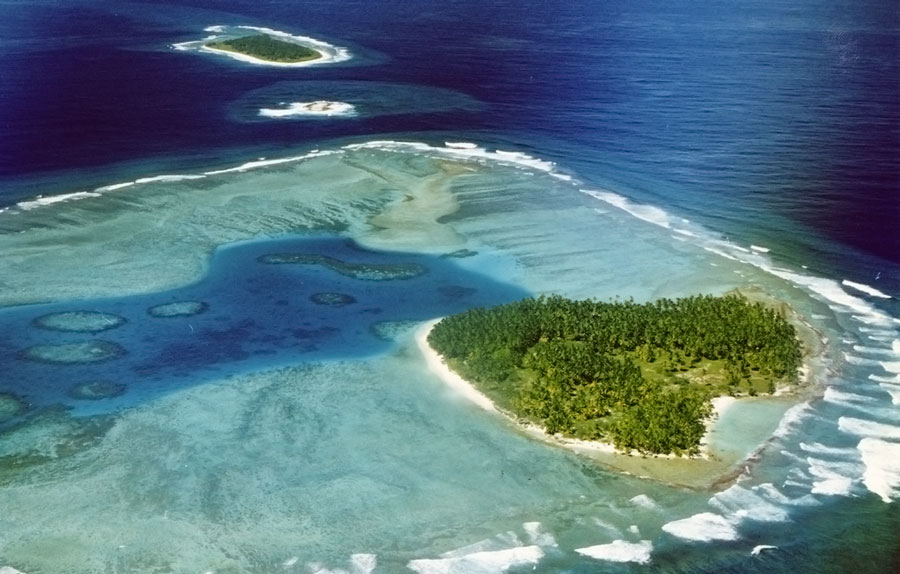
Did you find this interesting? Do not forget to share it with your friends